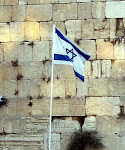Article published on Ynetnews December 19, 2010
By Zvi Lavi
Agreement provides Israel with exclusive economic, research rights and sovereignty over artificial facilities built within maritime area. 'Delimitation of territorial water borderline enables investors to feel economic certitude, promote and develop Israel's energy market,' says Minister Landau.
The exclusive economic zone within the territorial waters between Israel and Cyprus was set on Friday morning at the maritime half way point. The clarification of the borderline is essential in protecting Israel's rights to oil and underwater gas reservoirs.
The border was set in an agreement between Israel and Cyprus, signed this morning in Nicosia by Infrastructure Minister Uzi Landau and Cyprus' Foreign Minister Markos Kyprianou.
During the signing ceremony, Landau said that "the delimitation of the territorial water borderline will enable investors to feel economic certitude and promote and develop Israel's energy market."
The exclusive economic zone is an area where the country has exclusive economic and research rights but has no sovereignty other than over the artificial facilities it builds in the area. The accord was signed after vigorous negotiations in recent months, between diplomatic and professional representatives from both sides.
Delineation of the maritime borderline with Cyprus was done with Cyprus' full cooperation through experts from both countries, according to the accepted principles of international law according to the accepted professional measuring methods.
Until now, Israel operated in Mediterranean waters according to the principles of international law concerning the international shelf. According to these principles, the country has automatic rights over all natural resources within her international shelf even if it doesn't make a formal announcement.
The delimitation of the exclusive economic zone allows for more maritime border certainty towards investors and neighboring countries and will help Israel anchor its economic rights in the Mediterranean as well as pave the way for searching for and developing energy sources at sea.
Joint resources will be divided
In the agreement, Israel and Cyprus commit to cooperating on the development of cross border resources if any are discovered, and will hold negotiations over the nature of the technical and professional arrangements needed in order to divide the joint resources.
Following the signing of the agreement Minister Landau said: "The signing reflects the close relations and ongoing cooperation between Israel and Cyprus.
In light of the recent significant natural gas resources discovery in the Mediterranean, the delimitation of the maritime border has an important role in anchoring the essential economic rights of the state in connection with the ocean's natural resources."


















